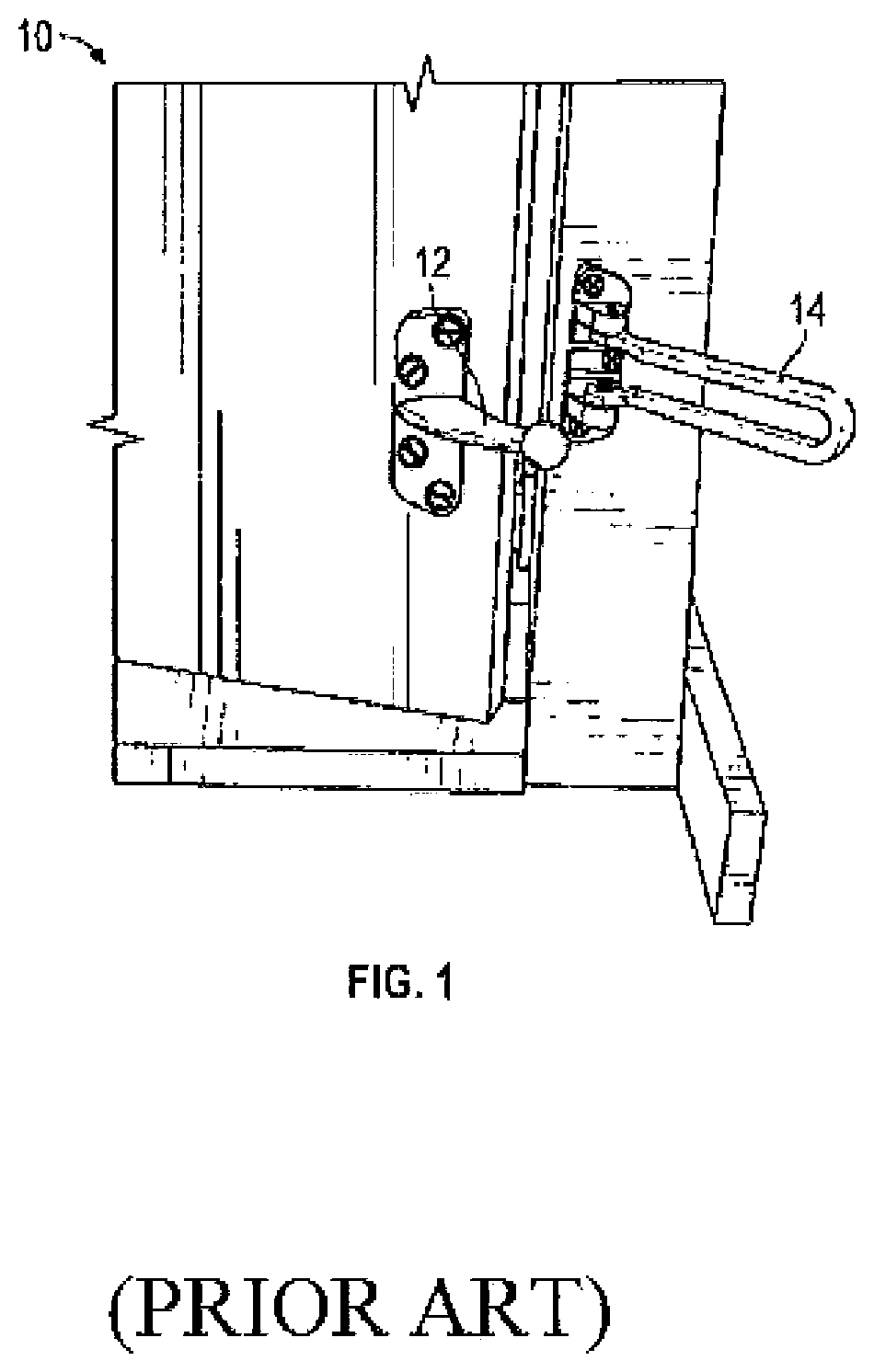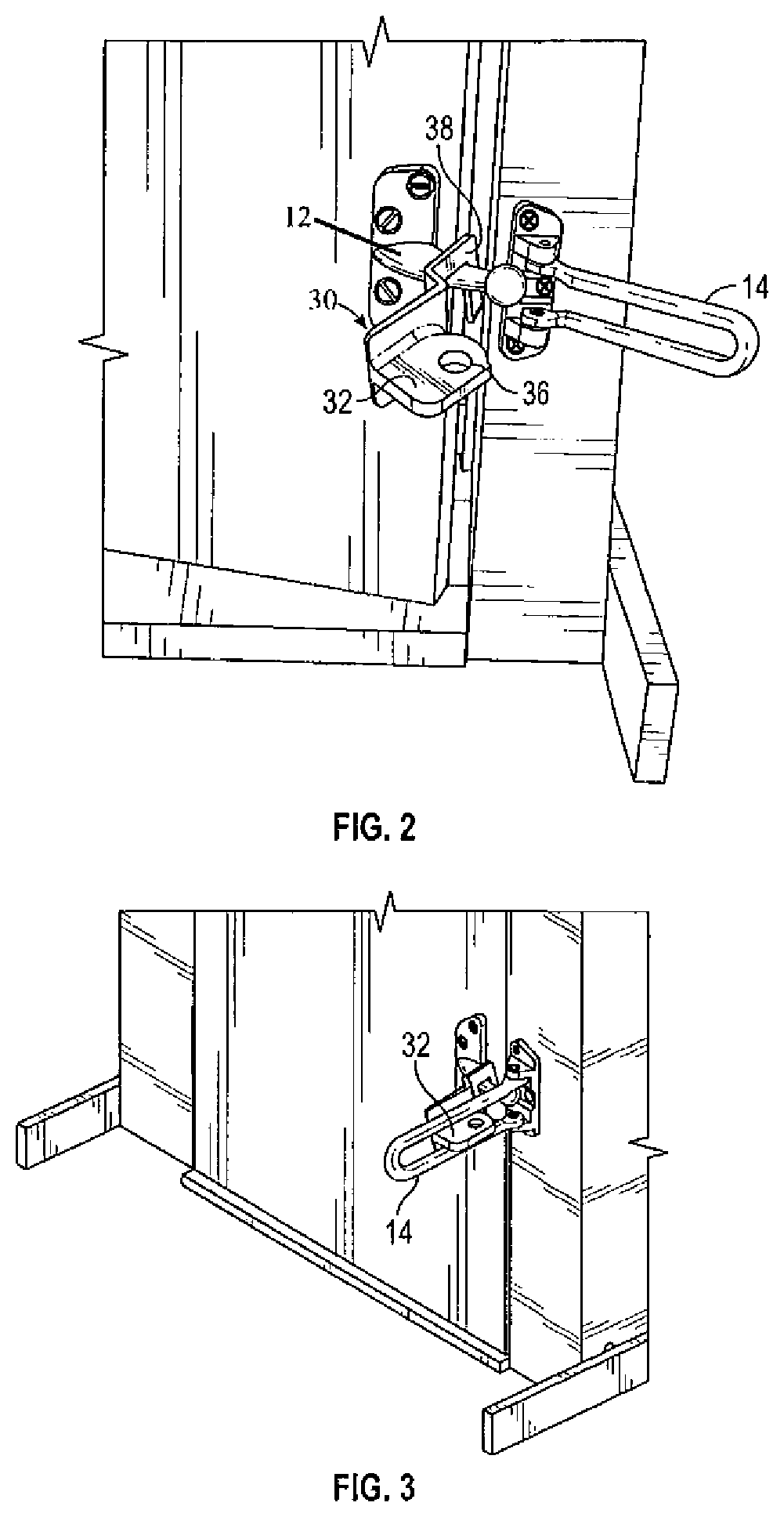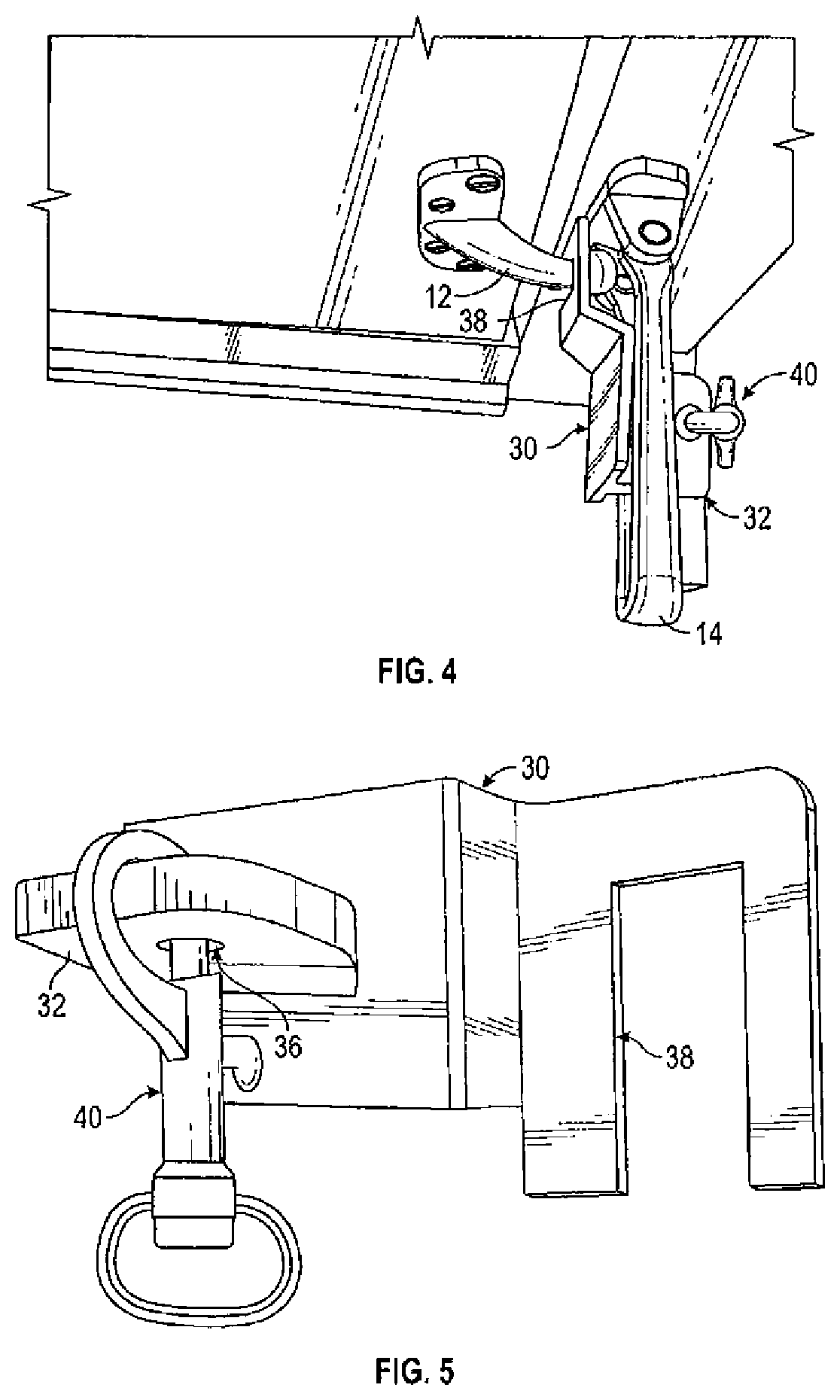Guard for a latch to prevent opening
a technology of latches and guards, which is applied in the direction of building locks, constructions, construction fastening devices, etc., can solve the problems of not solving the problem and not revealing the locking pin
- Summary
- Abstract
- Description
- Claims
- Application Information
AI Technical Summary
Benefits of technology
Problems solved by technology
Method used
Image
Examples
Embodiment Construction
[0020]As shown in FIGS. 2 to 4, the present invention provides a protective locking guard 30, which includes a flat horizontal plate 32 and also includes a notch 38 for placing over and engaging the latch arm 12. Specifically, the locking guard 30 includes an elongated vertical stepped plate for releasably securing the locking guard 30 to the existing stationary latch arm 12 and to the existing swinging arm 14. As shown, in FIGS. 2 to 5, the locking guard 30 is completely portable and can be secured to typical door latch security devices 10 without the need for mounting the locking guard using any additional fasteners, e.g., threaded fasteners. The locking guard 30 has a step-up portion at one end and a step-down portion at the other end, wherein the vertical height of the step-down portion can be more than the height of the step-up portion. Also, the step-up portion and the step-down portion are preferably positioned at an angle of greater than 90 degrees with respect to each other...
PUM
 Login to View More
Login to View More Abstract
Description
Claims
Application Information
 Login to View More
Login to View More - R&D
- Intellectual Property
- Life Sciences
- Materials
- Tech Scout
- Unparalleled Data Quality
- Higher Quality Content
- 60% Fewer Hallucinations
Browse by: Latest US Patents, China's latest patents, Technical Efficacy Thesaurus, Application Domain, Technology Topic, Popular Technical Reports.
© 2025 PatSnap. All rights reserved.Legal|Privacy policy|Modern Slavery Act Transparency Statement|Sitemap|About US| Contact US: help@patsnap.com



